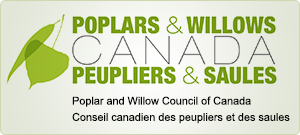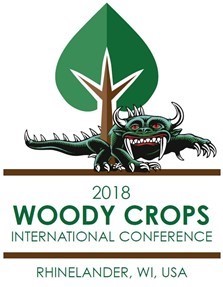 An International Short Rotation Woody Crops Conference took place recently in Rhinelander, Wisconsin. A joint meeting of the Short Rotation Woody Crops Operations Working Group of the USA, the Poplar and Willow Council of Canada, Working Party 2.08.04 (Physiology and Genetics of Poplars and Willows) and 1.03.00 (Short Rotation Forestry) of the International Union of Forestry Research Organizations (IUFRO), Task 43 (Biomass Feedstocks for Energy Markets) of the International Energy Agency Bioenergy Agreement (IEA Bioenergy), and the Environmental and Ecosystem Services Working Party of the International Poplar Commission (IPC), the event was ably organized locally by the Northern Research Station of the USDA Forest Service under the capable leadership of Ron Zalesny, Supervisory Research Plant Geneticist. What about the Hodag? It is a mythical menacing monster, native to the Rhinelander area for which it has become the mascot - a relative of the Loch Ness Monster in the Scottish Highlands or the yeti of the Himalayas.
An International Short Rotation Woody Crops Conference took place recently in Rhinelander, Wisconsin. A joint meeting of the Short Rotation Woody Crops Operations Working Group of the USA, the Poplar and Willow Council of Canada, Working Party 2.08.04 (Physiology and Genetics of Poplars and Willows) and 1.03.00 (Short Rotation Forestry) of the International Union of Forestry Research Organizations (IUFRO), Task 43 (Biomass Feedstocks for Energy Markets) of the International Energy Agency Bioenergy Agreement (IEA Bioenergy), and the Environmental and Ecosystem Services Working Party of the International Poplar Commission (IPC), the event was ably organized locally by the Northern Research Station of the USDA Forest Service under the capable leadership of Ron Zalesny, Supervisory Research Plant Geneticist. What about the Hodag? It is a mythical menacing monster, native to the Rhinelander area for which it has become the mascot - a relative of the Loch Ness Monster in the Scottish Highlands or the yeti of the Himalayas.
During the course of the two-day conference, held in the spacious and leafy setting of Nicolet College, close to 50 people from 14 States of the USA and 3 Canadian Provinces, as well as Belgium, Croatia, New Zealand, Poland and Serbia, participated in the technical program which included 29 oral presentations and 8 poster presentations. These covered a range of topics related to short rotation woody crops - primarily poplars and willows - including genetics and physiology, phytotechnologies, biomass production, ecosystem services, stakeholders, bioproducts, harvesting and logistics. Abstracts of presentations (including posters) have been published in the conference Proceedings in a special issue of the open access online journal Forests. Peer-reviewed papers based on conference presentations and others are also being published in the Forests special issue.
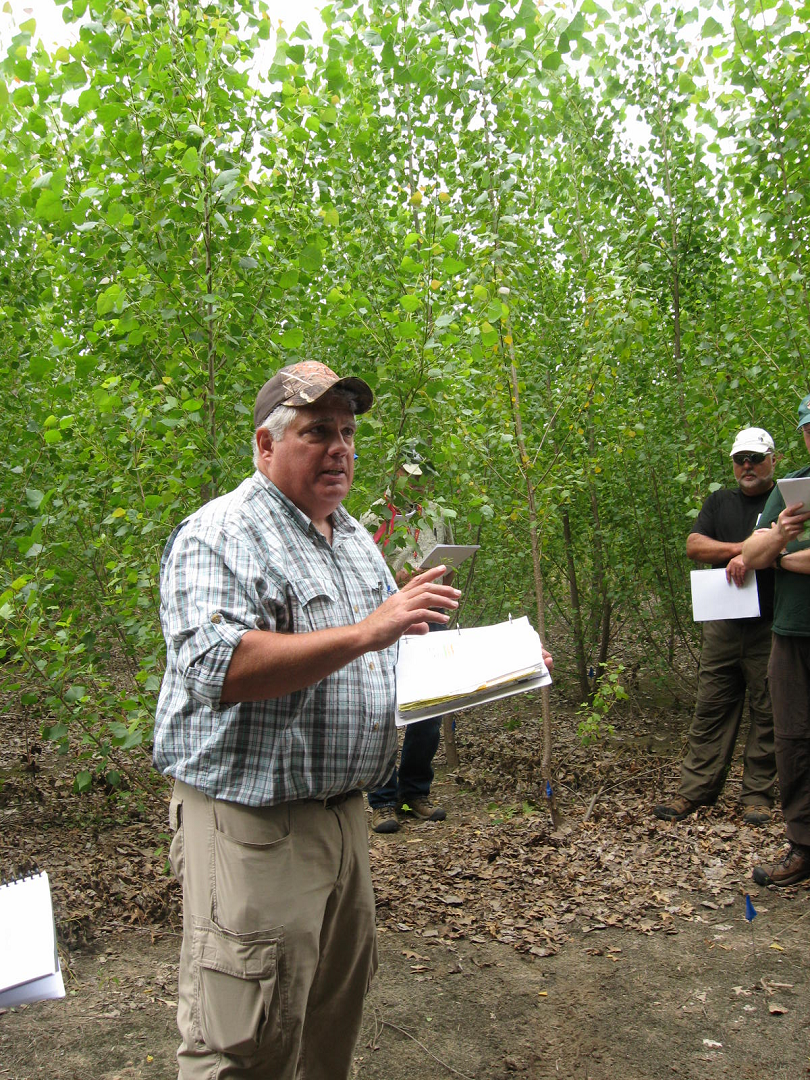
Bernie McMahon leading pre-conference field tour. Photo: Jim Richardson |
Immediately prior to the main conference, a two-day field tour presented the Populus breeding and testing program of the Natural Resources Research Institute (NRRI) of the University of Minnesota in northern Minnesota. The first day visits included an extensive series of poplar field trials established over the period 2015 to 2018 in the Cohasset area, as well as field trials and nursery collections established over a 20-year period near Grand Rapids. On the second day, the group visited the main facility of the NRRI in Duluth, to meet the Director, Dr. Rolf Weberg, prior to driving through north-east Minnesota and northern Wisconsin to Rhinelander for a visit to the Institute for Applied Ecosystem Studies of the USDA Forest Service. The pre-conference tour was carefully and efficiently organized by Bernie McMahon of NRRI.
Following the conference, many of the participants also travelled on a three-day field tour of phytoremediation trials with poplars and willows in eastern Wisconsin. Most of the six stops on this tour were associated with the Great Lakes Restoration Initiative which aims to accelerate efforts to protect and restore the largest system of fresh surface water in the world. More specifically for nonpoint source pollution impacts on nearshore health, the objective is to reduce untreated runoff from urban watersheds. Poplar and willow plantations can provide an efficient and cost-effective means of achieving that objective. These were seen in landfill phyto-buffer projects at Bellevue (near Green Bay) and Menominee Falls (near Milwaukee), a landfill groundwater recycling project at Whitelaw (near Manitowoc), and a landfill phytoremediation project at Manitowoc. Other stops showed the Ecolotree EBuffer® system for leachate and conaminated groundwater interception at Fond du Lac and the Sand Creek Consultants green infrastructure and stormwater management project at Menominee Falls. The post-conference tour was ably organized and led by Ron Zalesny of the USDA Forest Service.
All six of the organizations which jointly hosted the conference held business meetings during the event. The Poplar and Willow Council of Canada conducted its annual business meeting, chaired by Raju Soolanayakanahally. Reports of activities for the past year were received and discussed, financial reports and budgets were reviewed and approved, membership of the Board of Directors was reviewed and updated, and decisions were made about future activities. There was no change in the existing Executive under Raju Soolanayakanahally. Shathi Akhter of Agriculture and Agrifood Canada, Indian Head, SK and Andrej Pilipovic of the Institute of Lowland Forestry and Environment, Novi Sad, Serbia were added to the Board to fill vacancies among Directors at Large . It was agreed to hold the 2019 meeting of PWCC in conjunction with the biennial gathering of the Canadian Forest Genetics Association August 19-23 at Lac Delage, Quebec.
And what about the Hodag? Although fierce and menacing in appearance, the Hodag is not reported to have any negative impacts on the survival and growth of poplars and willows. In fact, it may have a beneficial impact on young plantations by reducing populations of animal predators in its natural habitat.
Available online:
- Conference Proceedings (includes abstracts of all conference presentations, oral and poster)
- Special issue of Forests journal with peer-reviewed papers related to the conference.
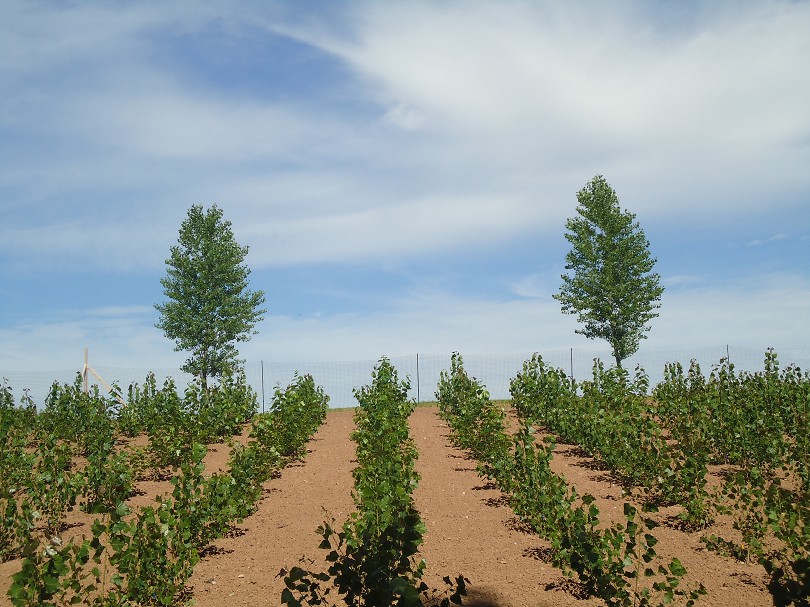
Poplar plantation on closed landfill at Bellevue, WI, USA. Photo: Raju Soolanayakanahally |
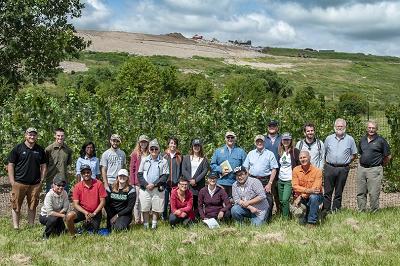
Post-conference field tour group at Orchard Ridge landfill. Photo: Marzena Niemczyk |
